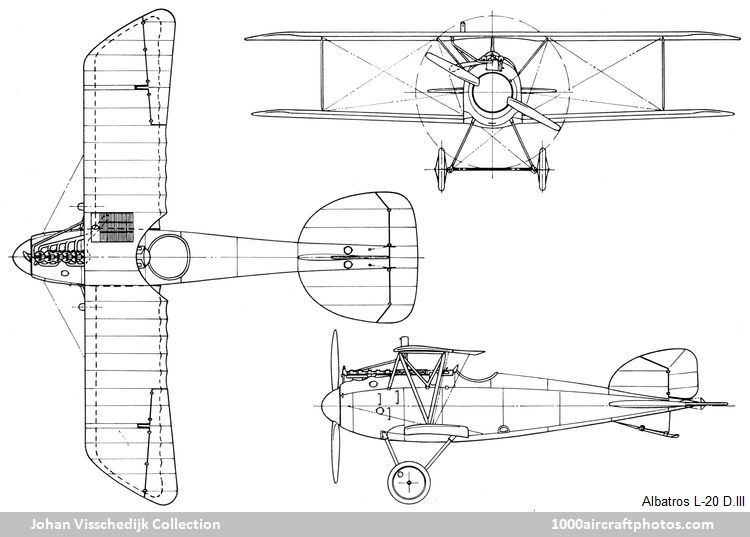The prototype flown in August 1916, was, in fact, one of a batch of 12 D.III aircraft ordered during the previous June, 400 more being ordered by Idflieg from Albatros during October. The D.III was issued to the Jastas from December 1916, and began to suffer recurrent wing failures, these resulting from the torsional flexibility of the lower wing (although this was not appreciated at the time).
The Ostdeutsche Albatros-Werke at Schneidemühl (presently Pila, Poland) received orders for 840 D.IIIs during April-August 1917, these featuring reinforced wings. The D.III was also license-built by the Österreichische Flugzeugfabrik A.G. (Öffag) at Wiener-Neustadt, Austria and fitted progressively with Austro-Dairnler engines of 185, 200 and 225 hp, the first production examples with the highest-powered of these engines being accepted in May 1918, and some 220 being delivered to the Austro-Hungarian k.u.k. (kaiserliche und königliche) Luftfahrttruppen (imperial and royal aviation troops) to the end of October 1918.
After WW I, Poland procured 60 of the 200 hp Oeffag-built D.IIIs, some being flown with the famous 7.Eskadra Myśliwska 'Kościuszkowska' (Fighter Squadron 'Kosciuszko') between August 1920 and May 1921 by US volunteer pilots."
Span: 29 ft 8 in (9.04 m)
Length: 24 ft 0.58 in (7.33 m)
Height: 7 ft 9.32 in (2.98 m)
Wing area: 220.66 sq.ft (20.50 sq.m)
Weight empty: 1,457 lb (661 kg)
Loaded weight: 1,953 lb (886 kg)
Max speed: 103 mph (165 kmh)
Climb: to 3,281 ft (1,000 m) 3 min 45 sec

